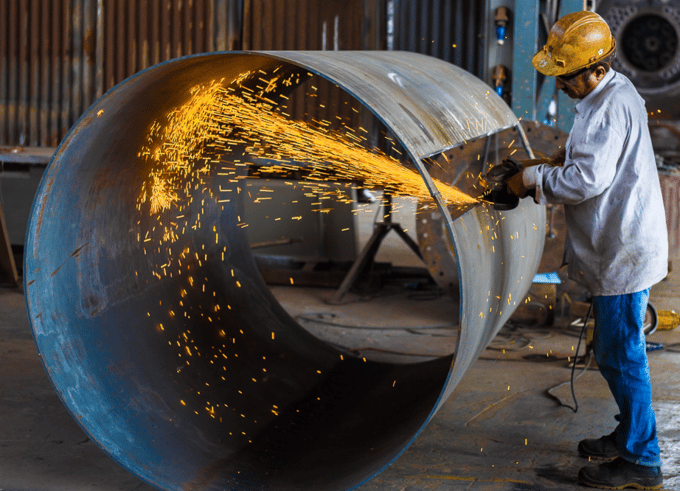
Approximately three-quarters of chemical elements are metals. A metal is a substance with high electrical and thermal conductivity, malleability, ductility, and light reflectivity. The term metal comes from the Greek word “metallon,” meaning mine, quarry, ore, metal. Metals are elements that readily form positive ions and have metallic bonds.
In commodities, the two groups of liquidly traded metals are precious and base metals. Precious metals have industrial and financial applications, while base metals are purely industrial. Gold is the leading precious metal that has a long history as a currency or means of exchange and a commodity. Central banks, monetary authorities, and governments worldwide own gold integral to foreign currency reserves. Copper is the leader of the base metal sector. Many market participants call the red metal “Doctor Copper” because a rising copper price tends to signal economic growth, while a declining price is a sign of contraction.
Most precious and base metals have been trending higher over the past years, but bull markets rarely move in straight lines. Precious metals have benefited from declining faith in fiat currencies. Base metals have rallied as China, the world’s leading consumer has had an unending appetite as its economy has grown and the demand for building infrastructure rose. Moreover, addressing climate change via alternative and renewable energy sources has increased base metals demand. Goldman Sachs analysts call copper “the new oil” because of its role in green energy initiatives.
Periodic downside corrections have been buying opportunities. Over the past weeks, many metals prices have moved lower, which could be a golden opportunity to buy the dip.
The reasons for the correction
- Rising U.S. and worldwide interest rates increase the cost of carrying inventories, weighing on metals prices.
- The strongest U.S. dollar in two decades caused metals prices to rise in other currency terms, putting downside pressure on metal demand and prices.
- Bull markets rarely move in straight lines. Precious and base metals prices rose to multi-year highs in 2022 before pulling back as rates and the dollar rose.
Picking bottoms is dangerous- An investment plan
- Commodities tend to be far more volatile than stocks, bonds, or most other asset classes.
- Raw material prices often rise or fall to levels that defy logic, reason, and rational fundamental analysis.
- Picking tops or bottoms is challenging because commodities can ignore even the most compelling supply and demand fundamentals.
- Over the past years, a scale-down buying approach to precious and base metals, leaving plenty of room to add on further declines, has been the optimal approach.
Precious metals opportunities
- Precious metals have a dual role; they are industrial and financial metals.
- Gold is the leader of the precious pack. However, each precious metal has individual fundamental factors; silver, platinum, and palladium prices tend to follow gold over the long term.
- A diversified investment approach is a portfolio of precious metals. The Aberdeen Physical Precious Metals Basket ETF (GLTR) owns gold, silver, platinum, and palladium, with over half the assets invested in physical gold bars.
- The most liquid individual physical ETFs include GLD for gold, SLV for silver, PPLT for platinum, and PALL for palladium.
- Gold and silver diversified senior, and junior gold mining ETFs are GDX, GDXJ, SIL, and SILJ.
- Many individual mining stocks offer exposure, but they involve idiosyncratic risks.
Base metals opportunities
- Base metals prices are highly sensitive to Chinese demand and the burgeoning demand for green energy initiatives.
- Copper is the leader of the pack. The other base metals including, aluminum, nickel, lead, zinc, and tin, tend to follow copper prices.
- CPER and JJC are the copper ETF and ETN products that follow the red metal higher and lower.
- A diversified investment approach is a portfolio of the most liquid base metals. The Invesco DB Base Metals Fund (DBB) owns copper, aluminum, and zinc, providing exposure to the physical metals.
- The iShares MSCI Global Metals & Mining Producers ETF (PICK) owns a portfolio of the leading base metal producers, including BHP, RIO, VALE, FCX, GLNCY, and many other worldwide base metals producers.
- Individual mining stocks offer exposure, but involve idiosyncratic risks, including management, specific mining properties, and geographical dynamics.
Three reasons to add metals exposure to your portfolio
- Reason one- The long-term trend in metals prices remains higher, and the current selloff could be a golden buying opportunity.
- Reason two- As China emerges from COVID-19 protocols, economic growth will likely increase metals demand. Moreover, global green initiatives support higher metal prices.
- Reason three- Inflation has caused rising production costs, putting upside pressure on metals prices.
It is challenging to identify growth prospects in markets these days. Metals are essential, and the global demand is rising. While the U.S. dollar has risen to its highest level since 2002, inflation and geopolitical dynamics erode all fiat currency values. The metals correction has caused the value proposition to improve.
Thanks for reading, and stay tuned for the next edition of the Tradier Rundown!